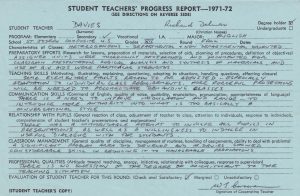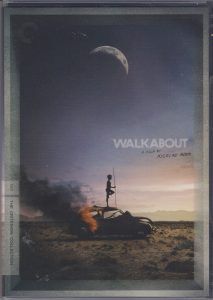If I hadn’t had an Aussie for my cooperating teacher at St. Joe’s in Edmonton in the fall of 1971, I would never had seen the 1970 movie Walkabout on the big screen in a theatre. And my cooperating teacher Bill Corcoran would never have gotten his PhD with my Ed CI prof-friend R. Glenn Martin and then returned to write and teach in Australia.
Bill would ask me about Martin and look at some of his materials from which I taught his 2 grade 12 classes (30 and 33) Death of a Salesman and Robert Anderson’s play I Never Sang for My Father–the excellent movie of which I saw on campus later in the summer of 1972. Later, I was surprised to hear he had connected with Glenn, but not surprised that he had returned to the country he was originally from and loved so much–Australia.
Bill was a friendly, respected, laid-back guy whose authority was never challenged by the kids. I learned a lot from watching him and he generally liked my performance (as seen in the above attached report).
He was quite excited about Walkabout and highly recommended I check it out while it was in town. He was certainly right that it was a beautiful film, though he omitted mentioning the animal scenes and animal killing scenes! Director Nicholas Roeg included these to compare the Aborigine boy’s ways with white civilization’s. Today, in North America (and probably since the 1970s), these animal killing scenes would not play well in an age of animal rights and so the movie might not pass muster if it was shot and released today.
A half-century later, I went back and watched the Criterion DVD version this past week, and it brought back fond memories of both the mesmerizing movie and Bill. I would have say it is Roeg’s best film, and every bit as powerful as his disturbing Don’t Look Now. It is hard not to be impressed by Roeg’s rich, poetic cinematography, his Garden of Eden visual symbolism, and his juxtaposed images of the outback and city. The film, I suspect, is still the most beautiful one ever made and shot in Australia. And now, 50 long years later, I understand and appreciate more of Bill’s keen enthusiasm back then.
Walkabout, though, is for audiences of high-school age or older and not the children who first read Vance’s original, less graphic novel. But for those who do see it, it is a very special, memorable masterpiece and, for this reason–a must-see for cinephiles and critics alike.


